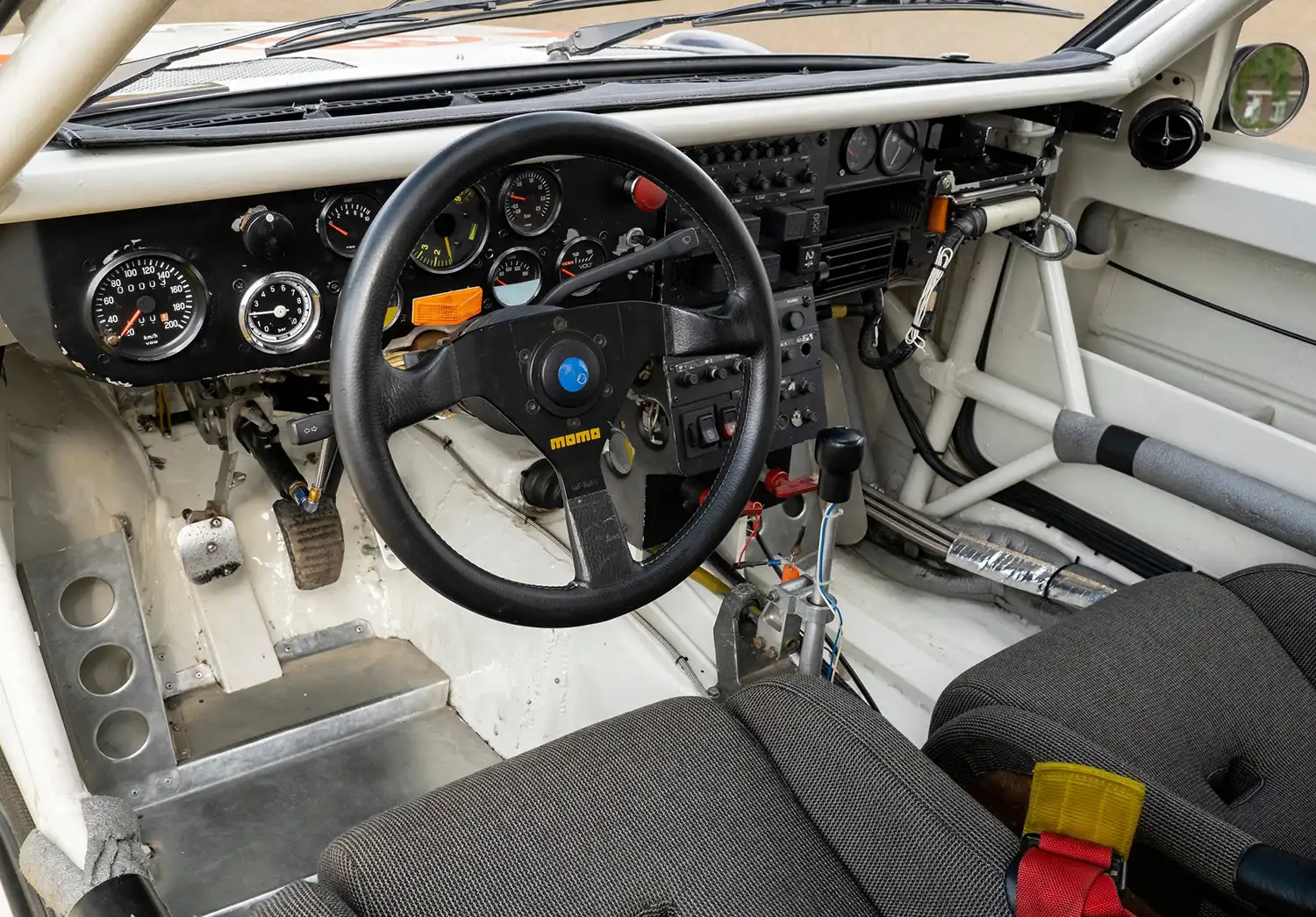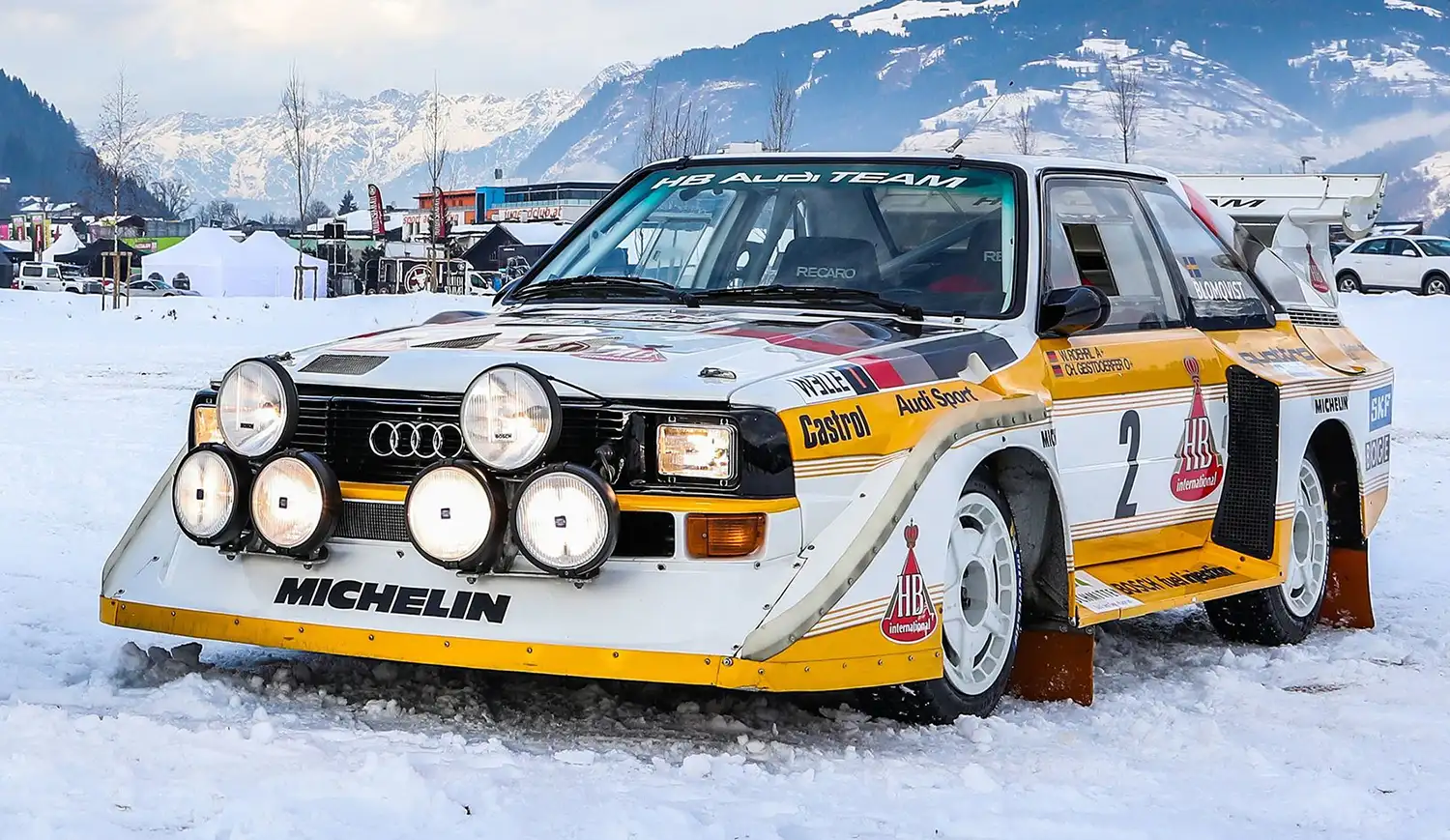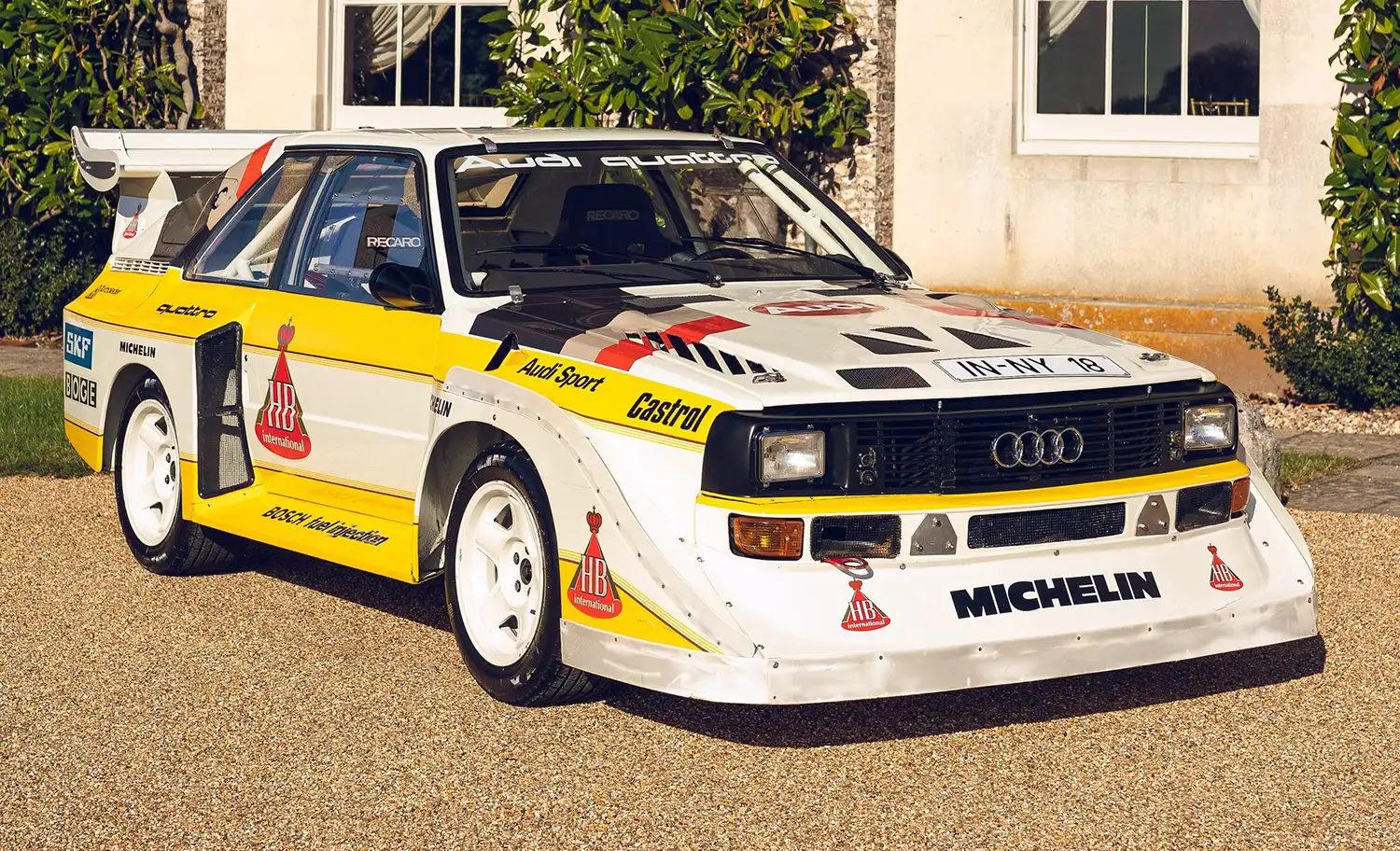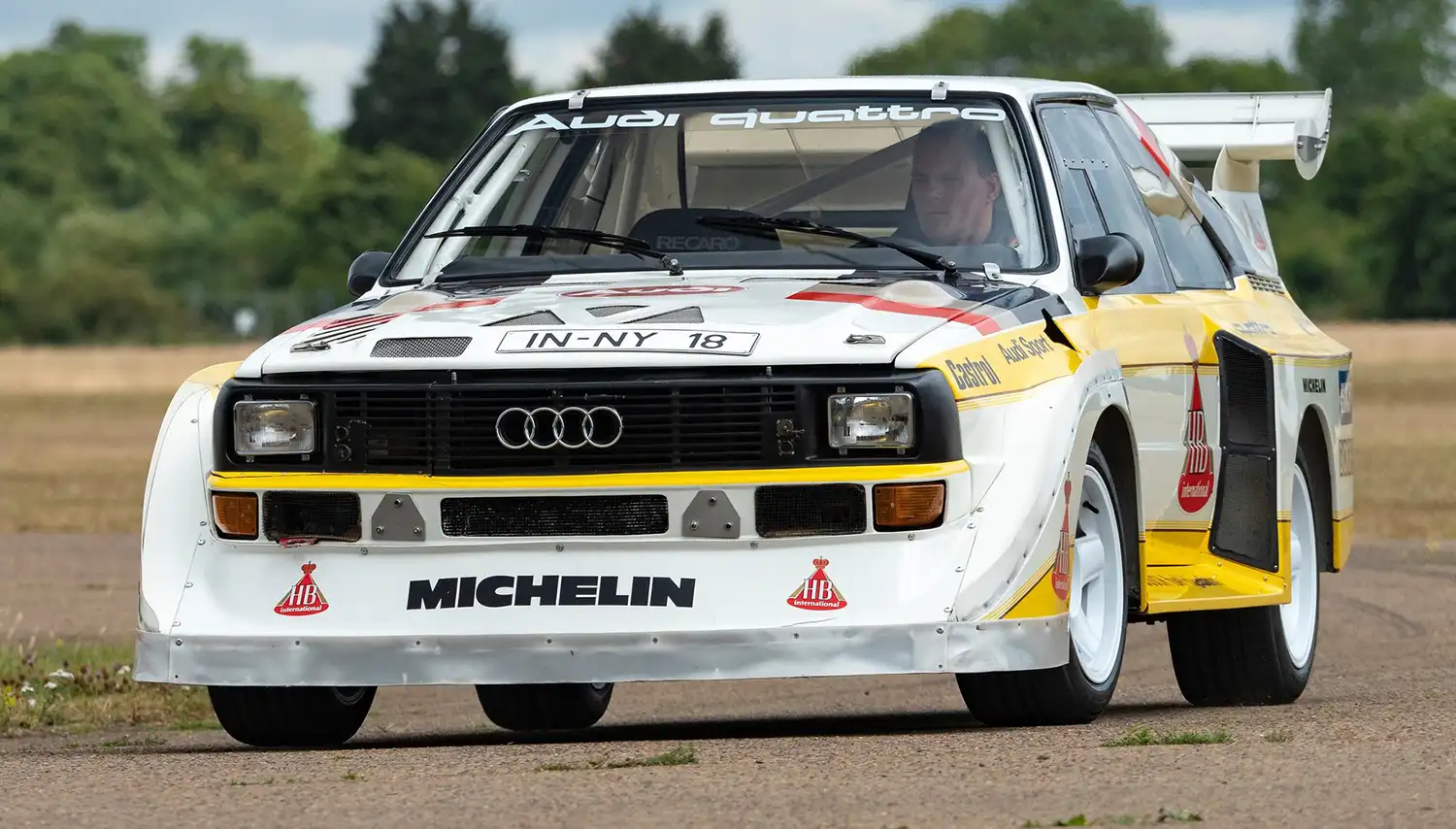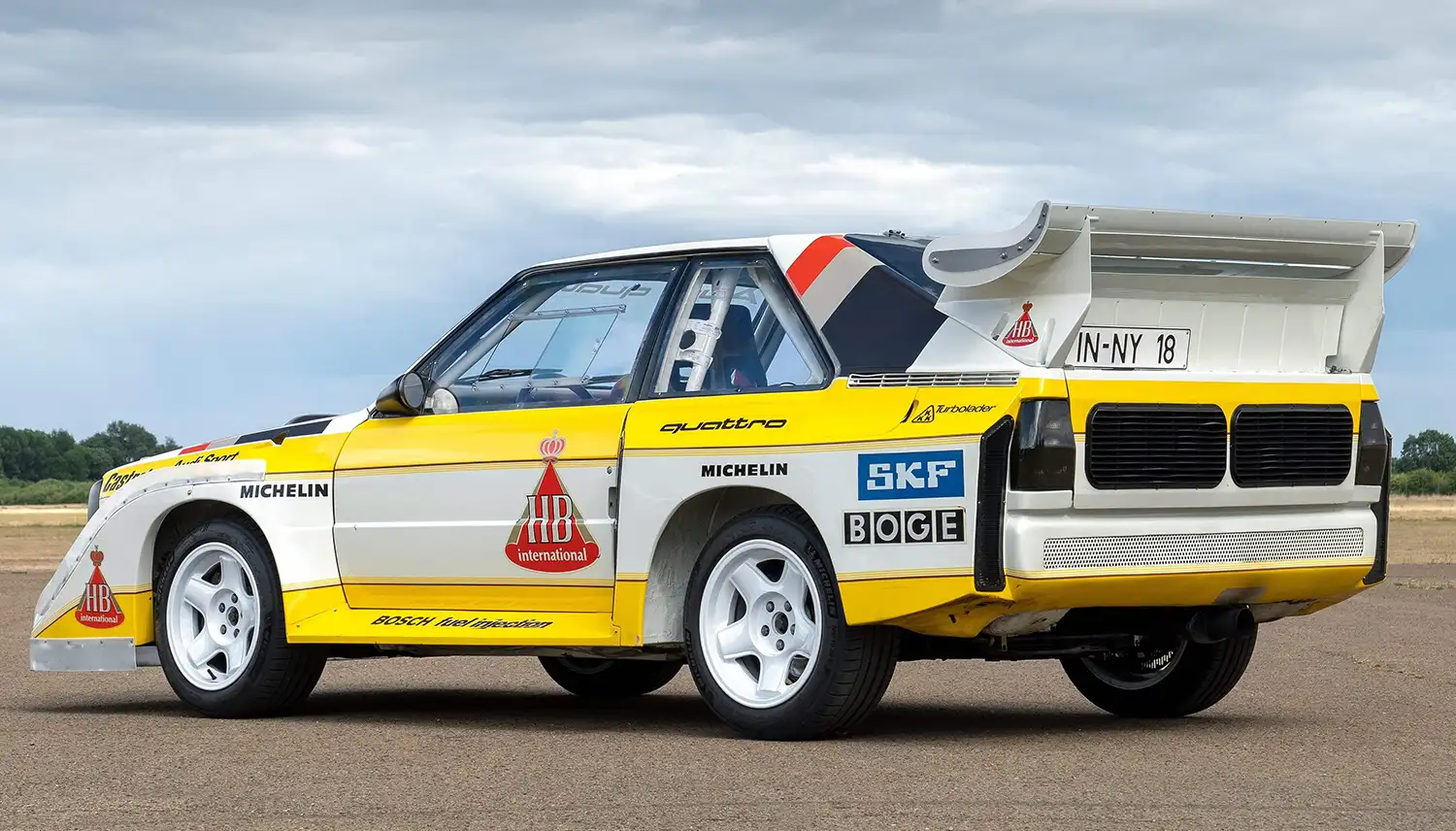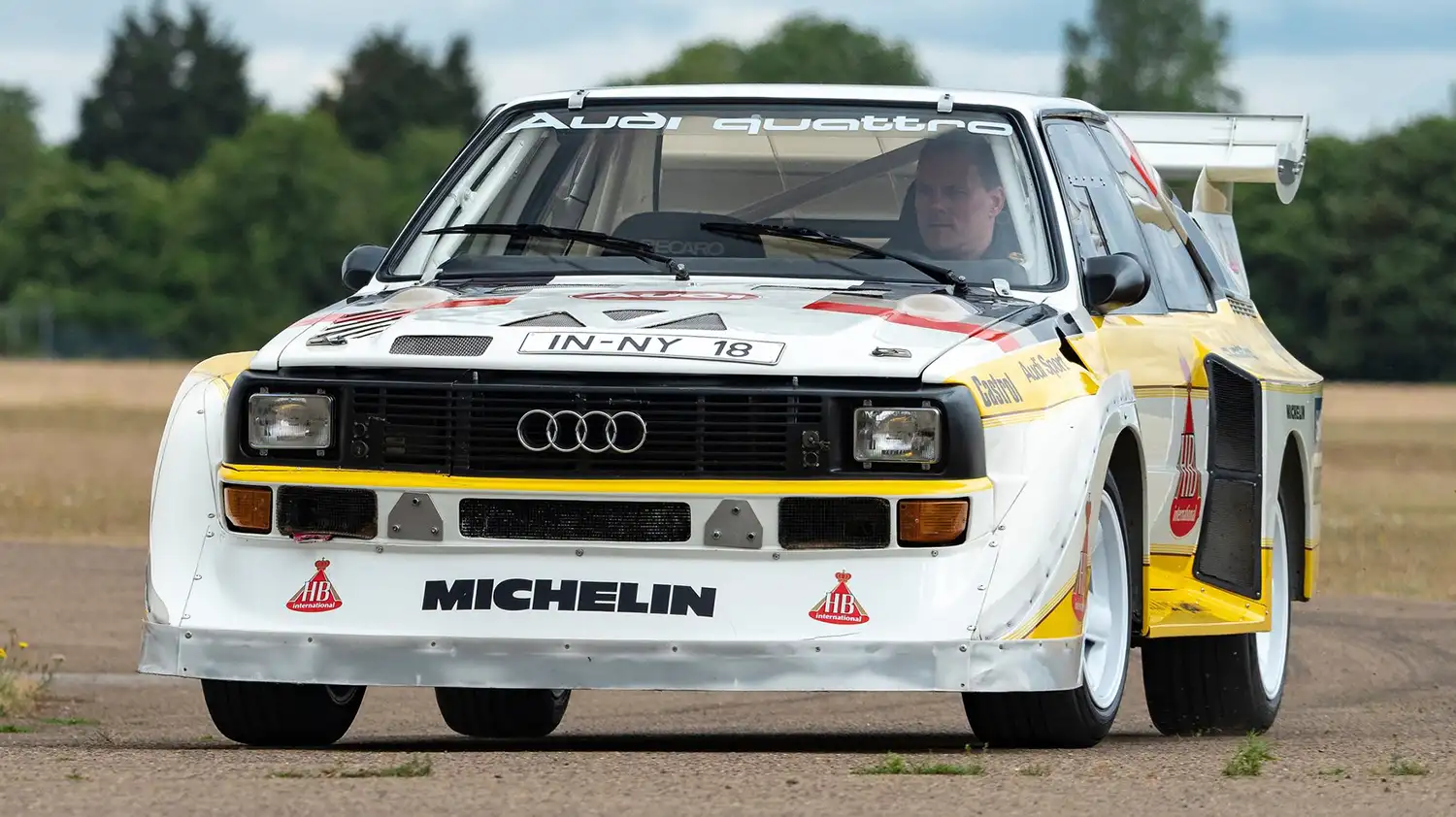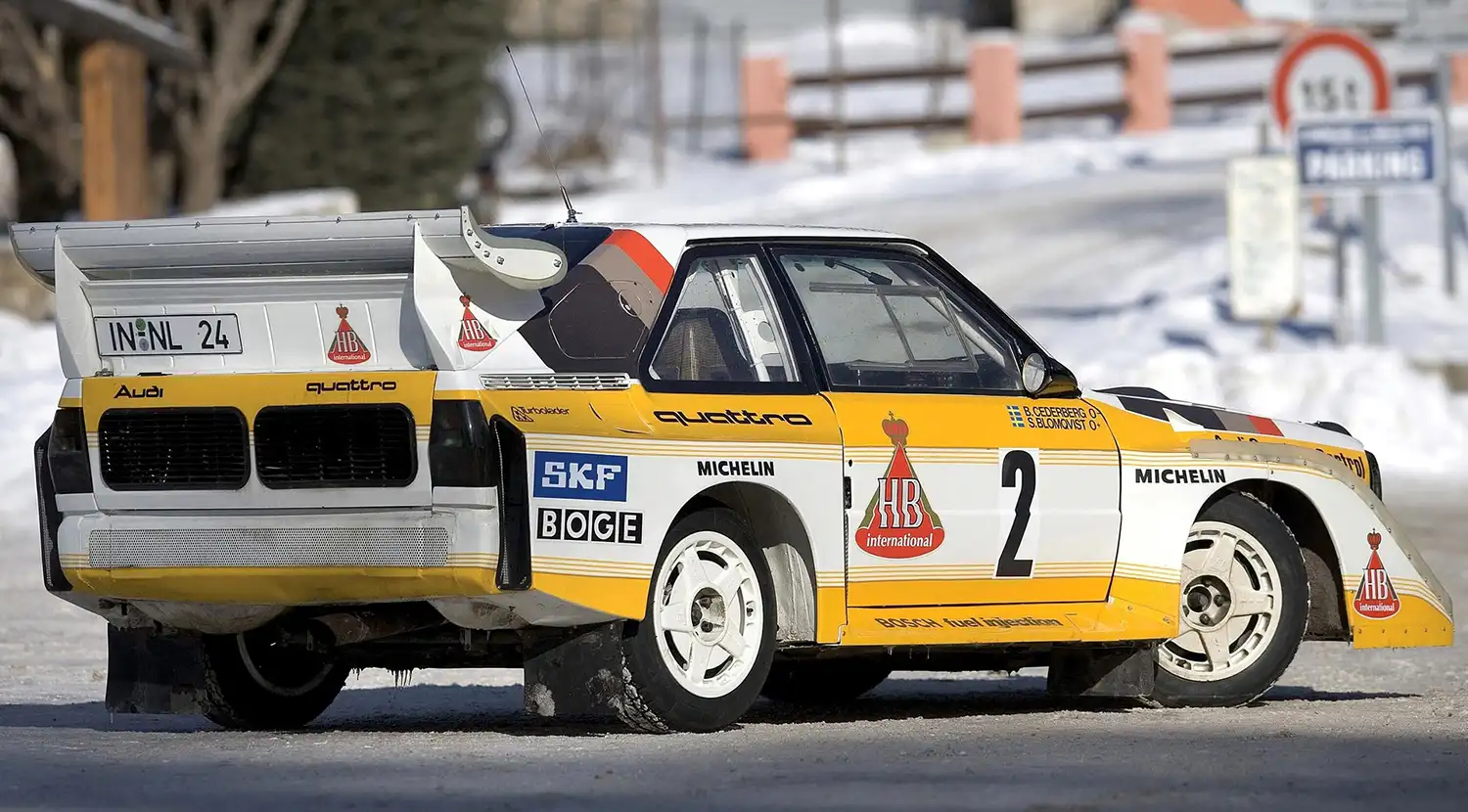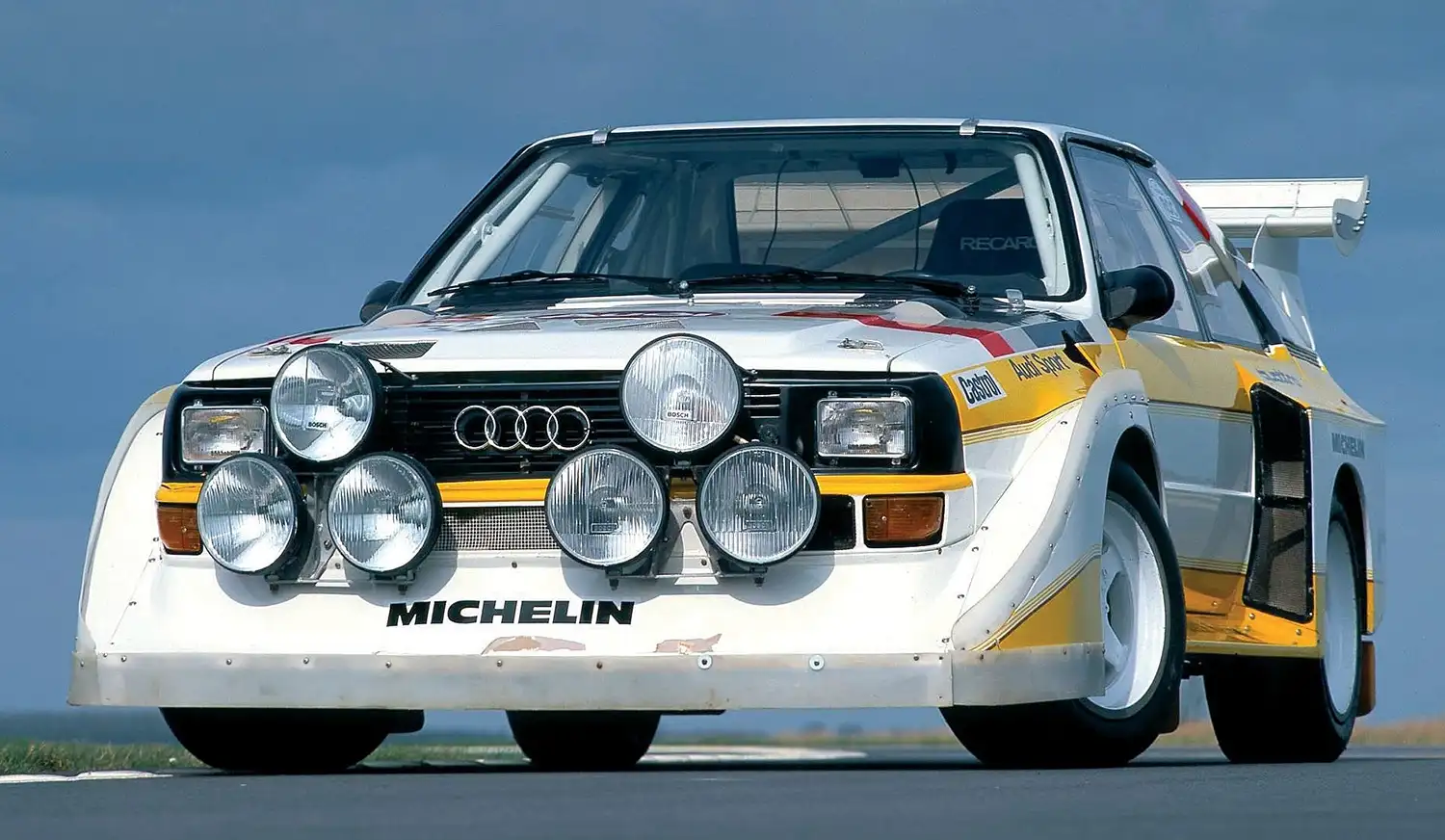
The Audi Sport Quattro S1 is a symbol of Group B rallying’s golden era, embodying both extreme performance and engineering innovation. Introduced in 1984, the S1 was a specialized variant of the Audi Quattro, meticulously engineered for homologation purposes to compete in the fiercely competitive Group B rally category.
Engineering Marvel
At the heart of the Audi Sport Quattro S1 is a 2,133 cc (2.1 L) inline-five engine, notable for its all-aluminum construction. With a bore and stroke of 79.3 mm × 86.4 mm, and equipped with a KKK K27 turbocharger, this powertrain was designed to maximize performance within the constraints of Group B regulations. The engine produces 306 PS (302 hp) at 6,700 rpm and 350 N⋅m (258 lb⋅ft) of torque at 3,700 rpm. For competition models, power surged to approximately 450 PS (444 hp) thanks to enhancements that pushed the limits of the turbocharged engine’s capabilities.
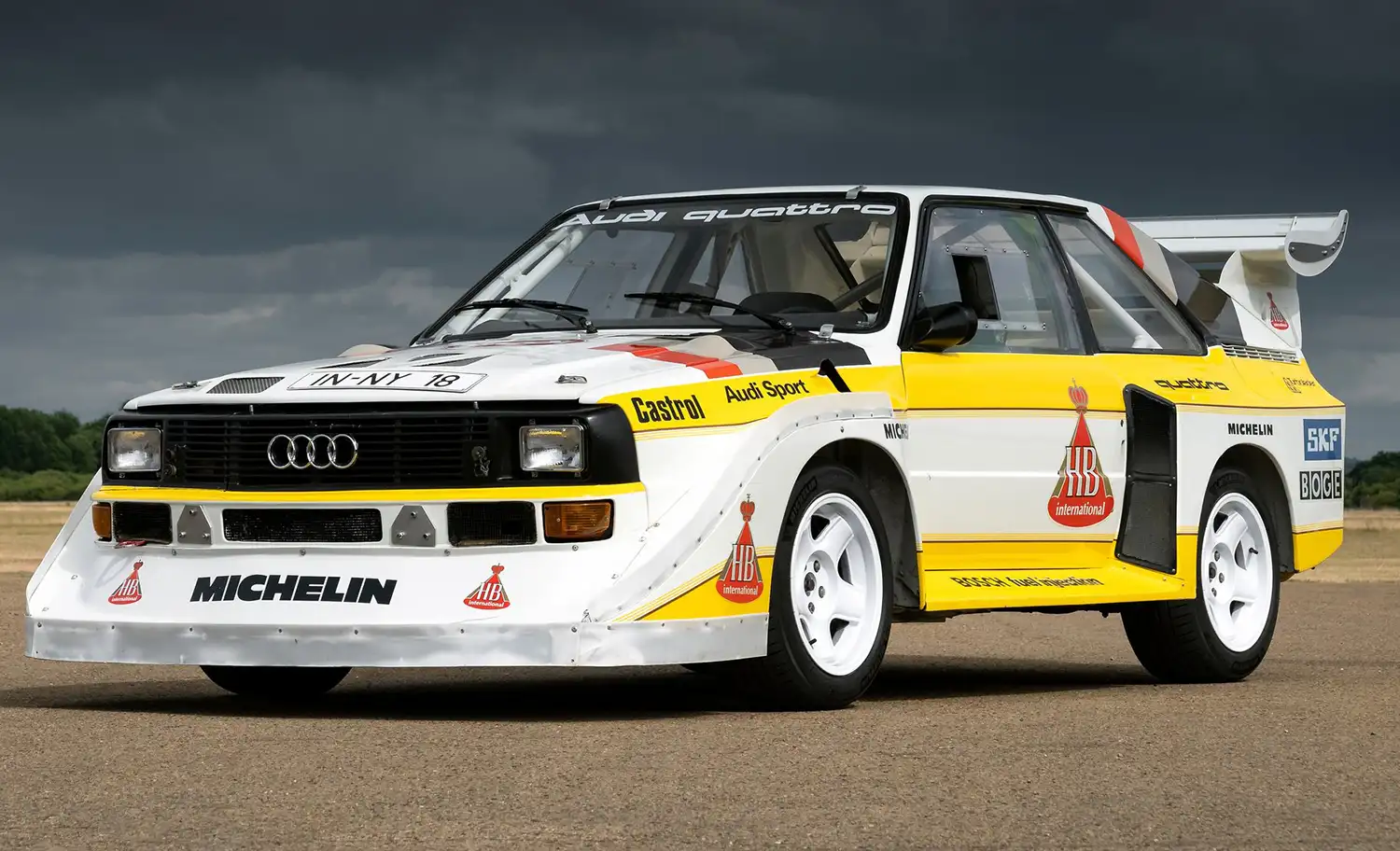
The Sport Quattro S1’s body featured carbon-kevlar construction and was significantly modified from the standard Audi Quattro. It boasted wider wheel arches and larger wheels (nine inches compared to the Ur-Quattro’s optional 8-inch wheels) to handle the increased performance. The car also sported a shorter wheelbase of 320 mm (12.6 in), which contributed to its agility and handling prowess.
A Racing Legacy
In its competitive guise, the Audi Sport Quattro S1 made an indelible mark on motorsport history. The car won the prestigious 1985 Pikes Peak International Hill Climb, driven by the legendary Michèle Mouton, and set a record time in the process. Only 224 units of this “short version” were produced, each carrying a price tag of DM 203,850.
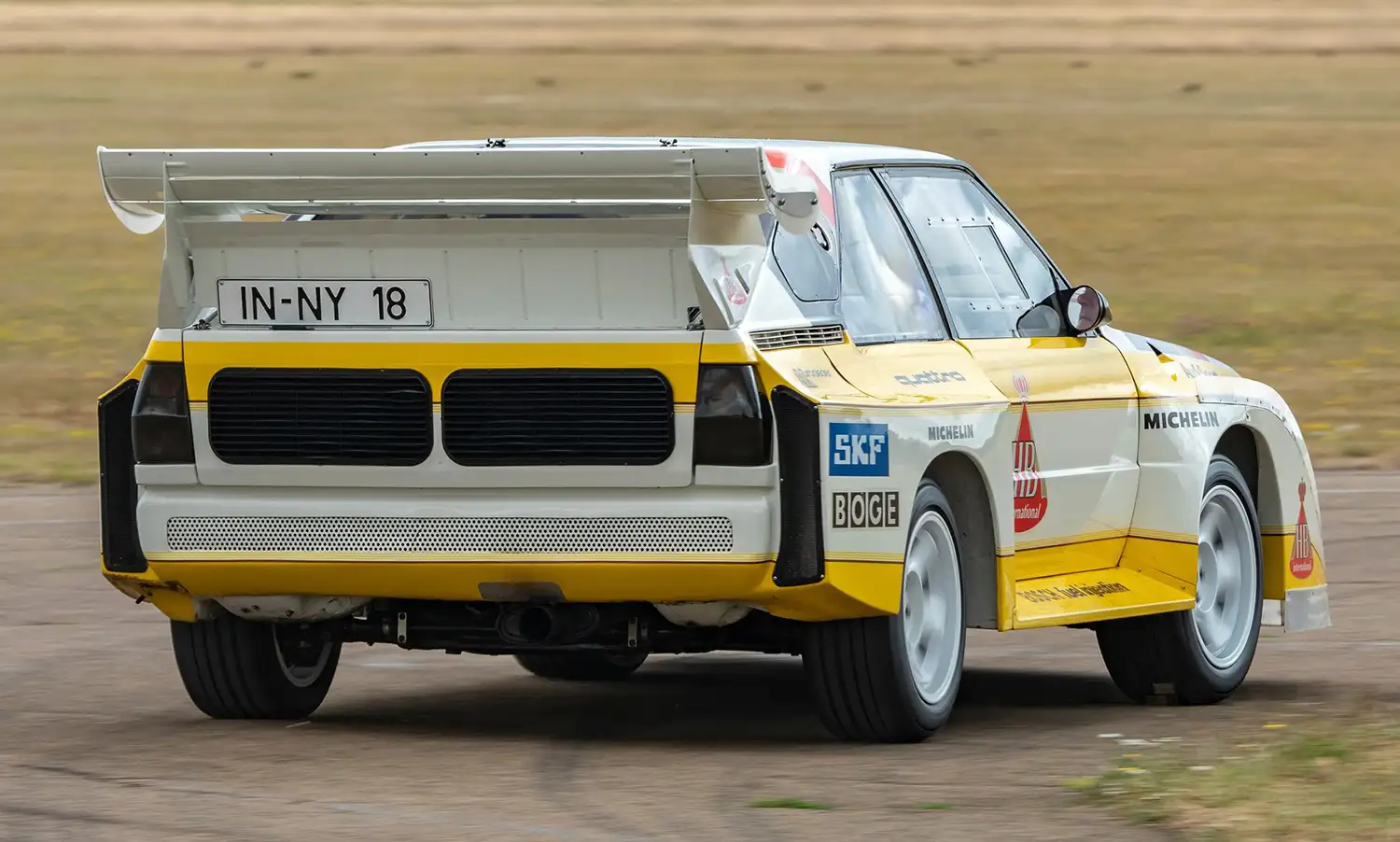
Sport Quattro S1 E2: The Evolution
At the end of 1985, Audi introduced the Sport Quattro S1 E2, an evolved version of the original S1. This update featured a 2,110 cc inline-five engine, producing a quoted 480 PS (353 kW; 473 hp). However, the actual power output exceeded 500 PS (368 kW; 493 hp) at 8,000 rpm, thanks to advanced turbocharging technology that minimized lag by using a recirculating air system.
The S1 E2 was visually distinctive with its aggressive aerodynamic kit, which included prominent front and rear wings and spoilers designed to enhance downforce. The car’s weight was reduced to 1,090 kg (2,403 lb), enabling it to accelerate from 0 to 100 km/h (62 mph) in just 3.1 seconds. It also featured an innovative “power-shift gearbox,” a precursor to modern DSG technology.
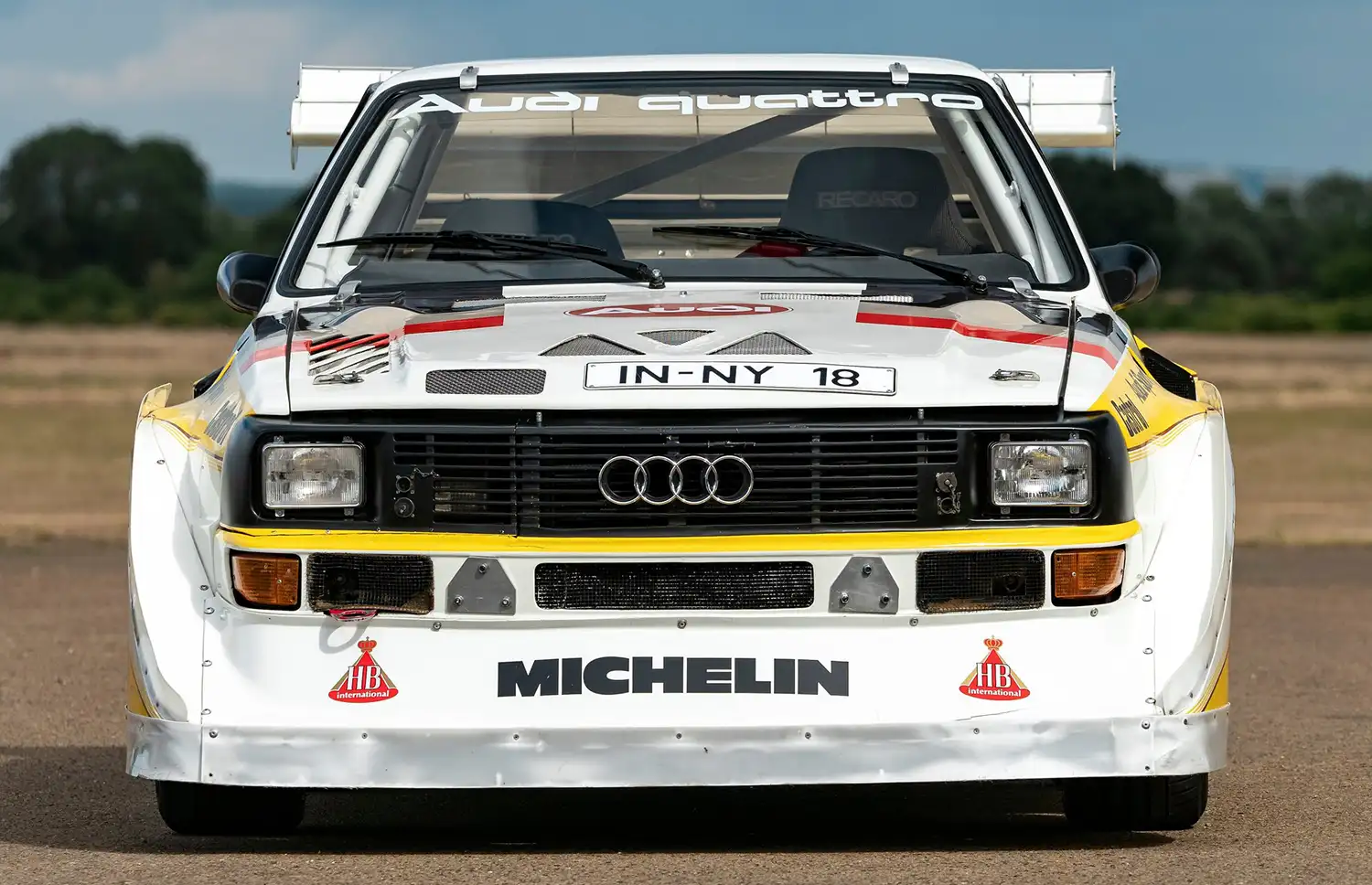
Debuting at the 1985 Rally Argentina, the S1 E2 achieved significant success in the rally circuit, with notable victories including the 1985 San Remo Rally, driven by Röhrl and Christian Geistdörfer. The S1 E2 became Audi’s final Group B car after the works team withdrew from the championship following the 1986 rally in Portugal. The final factory versions of the S1 E2 were rated at 600 PS (441 kW; 592 hp) and won the 1987 Pikes Peak International Hill Climb, driven by Walter Röhrl.
Shortlist
- Model: Audi Sport Quattro S1
- Engine: 2.1 L Inline-Five Turbocharged
- Power: 306 PS (302 hp) – Competition versions up to 450 PS (444 hp)
- Transmission: 4-Speed Manual
- Body: Carbon-Kevlar, Wider Wheel Arches, Shortened Wheelbase
- Key Achievements: 1985 Pikes Peak International Hill Climb Winner, 1985 San Remo Rally Winner
- Production: 224 units of short version; Audi Sport Quattro S1 E2 introduced in late 1985 with up to 600 PS (592 hp)
The Audi Sport Quattro S1 remains a revered icon in the world of rallying, symbolizing an era of raw power and unbridled enthusiasm in motorsport.
Source: Audi & Wikipedia

